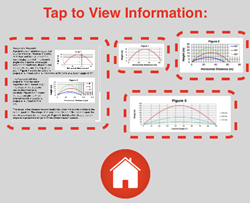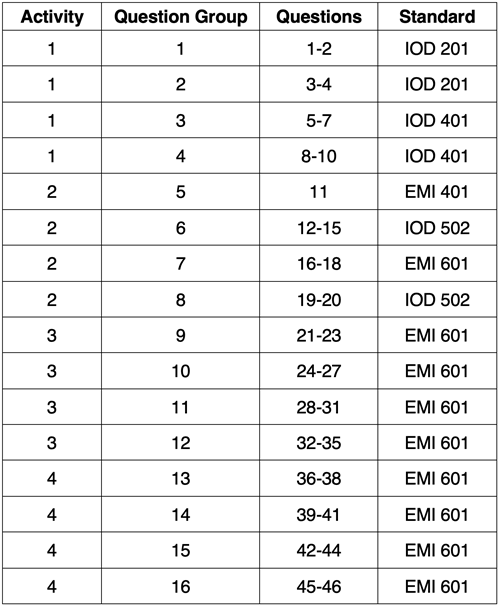About the Science Reasoning Center
 Highly Recommended
Highly RecommendedLike all our Science Reasoning Center activities, the completion of the Projectile Range activity requires that a student use provided information about a phenomenon, experiment, or data presentation to answer questions. This information is accessible by tapping on the small thumbnails found on the bottom right of every question. However, it may be considerably easier to have a printed copy of this information or to display the information in a separate browser window. You can access this information from this page.
The Standards
The Projectile Range activity uses Excel-generated plots to describe the trajectory of a projectile, to compare the trajectories for three different launch angles, and to show the effect of launch angle upon range for three different launch speeds. Questions target a student's ability to read graphical information, to interpolate from graphs, to recognize the effect of one variable on another variable, and to use information presented in graphs to answer related questions. Success with the activity requires some degree of proficiency with respect to ...
- Asking Questions and Defining Problems (Science and Engineering Practice 1.3)
Ask questions to determine relationships, including quantitative relationships, between independent and dependent variables. - Developing and Using Models (Science and Engineering Practice 2.3)
Develop, revise, and/or use a model based on evidence to illustrate and/or predict the relationships between systems or between components of a system. - Developing and Using Models (Science and Engineering Practice 2.4)
Develop and/or use multiple types of models to provide mechanistic accounts and/or predict phenomena, and move flexibly between model types based on merits and limitations. - Planning and Carrying Out Investigations (Science and Engineering Practice 3.5)
Make directional hypotheses that specify what happens to a dependent variable when an independent variable is manipulated. - Analyzing and Interpreting Data (Science and Engineering Practice 4.1)
Analyze data using tools, technologies, and/or models (e.g., computational, mathematical) in order to make valid and reliable scientific claims. - Using Mathematics and Computational Thinking (Science and Engineering Practice 5.3)
Use mathematical, computational, and/or algorithmic representations of phenomena to describe and/or support claims and/or explanations. - Patterns (Crosscutting Concept 1.2)
Empirical evidence is needed to identify patterns. - Systems and System Models (Crosscutting Concept 4.1)
When investigating or describing a system, the boundaries and initial conditions of the system need to be defined and their inputs and outputs analyzed and described using models. - Stability and Change (Crosscutting Concept 7.4)
Change and rates of change can be quantified and modeled over very short or very long periods of time. Some system changes are irreversible.
While the Projectile Range activity addresses the six NextGen Science and Engineering Practices and the three crosscutting concept above, the activity drew its greatest inspiration from ACT's College Readiness Standards for Science Reasoning. The activity consists of 46 questions organized into 16 Question Groups that are spread across the four activities. Two strands (Interpretation of Data - IOD and Evaluation of Models, Inferences, and Experimental Results - EMI) of the College Readiness Standards are addressed in this activity. The code given for the standard includes three letters to indicate the strand and three numbers to indicate the specific standard within that strand. Higher numbers are indicative of more complex science reasoning skills. The relationship between the questions and the standards is as follows:

Complementary and Similar Resources
The following resources at The Physics Classroom website complement the Projectile Range Science Reasoning Activity. Teachers may find them useful for supporting students and/or as components of lesson plans and unit plans.
Physics Classroom Tutorial, Vectors - Motion and Forces in Two Dimensions, Lesson 2
Physics Video Tutorial, Vectors and Projectiles: Motion Characteristics of Projectiles
Physics Interactives, Vectors and Projectiles Chapter, Projectile Simulator
Physics Interactives, Vectors and Projectiles Chapter, Trajectory Simulator
Concept Builders, Vectors and Projectiles: Trajectory - Angle-Launched Projectiles
Concept Builders, Vectors and Projectiles: Which One Doesn't Belong - Projectiles
Minds On Physics, Vectors and Projectiles Module, Mission VP7 - VP10
The Calculator Pad, Vectors and Projectiles, Problem Sets VP11 - VP17
Recommended: Print Passage, Tables, and Graphs
Also see: